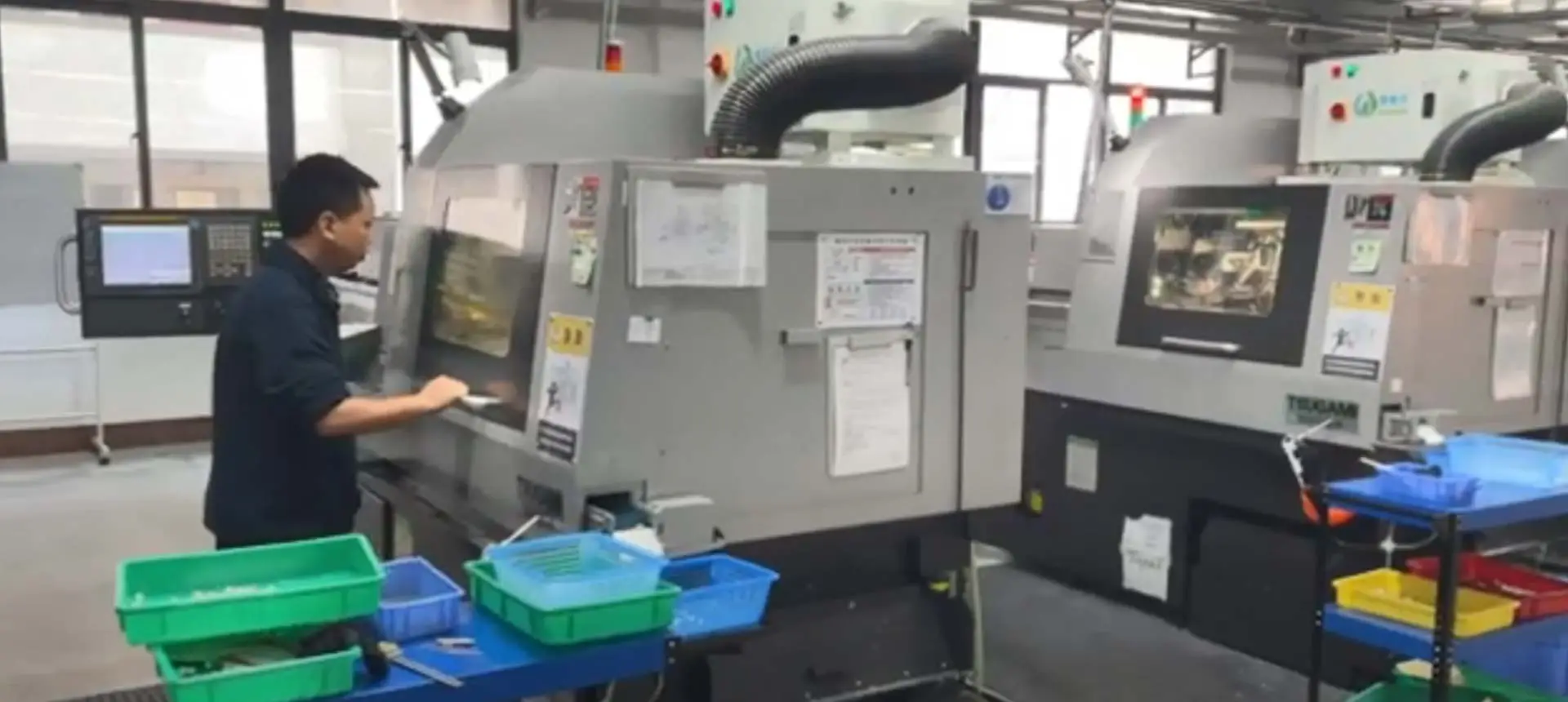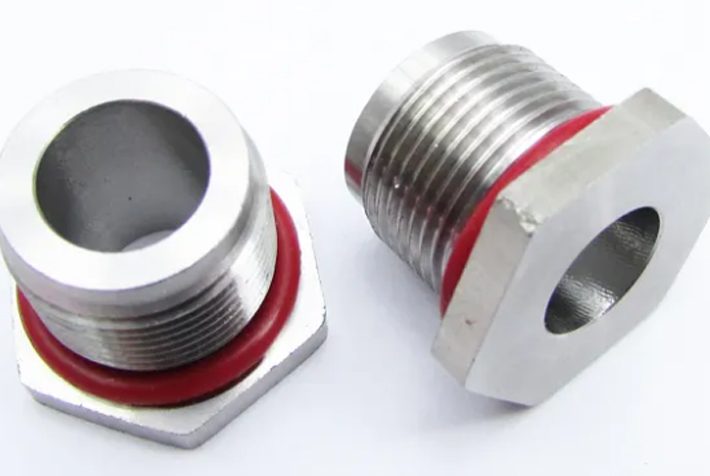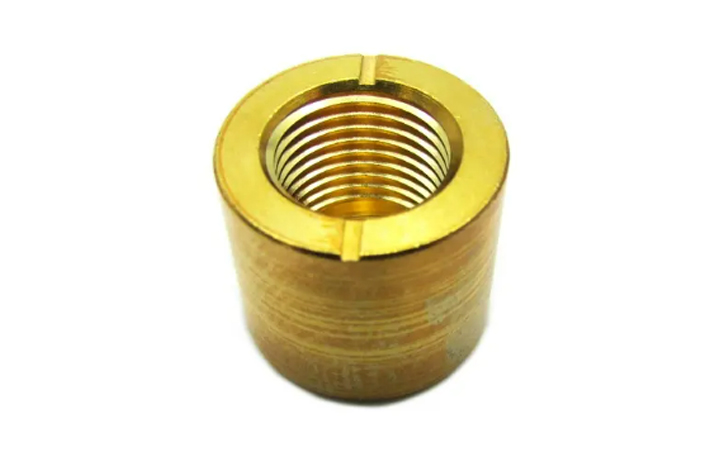
Pemeriksaan bahan: proses kawalan kualiti bermula dengan pemeriksaan bahan mentah yang masuk. Bahan-bahan yang digunakan untuk bushings/lengan hendaklah memenuhi piawaian dan keperluan yang ditetapkan. Kaedah ujian bahan mungkin termasuk analisis komposisi kimia, ujian kekerasan, dan pengesahan dimensi.
Ketepatan dimensi: Bushings/sleeves mesti mempunyai dimensi yang tepat untuk memastikan kesesuaian dan fungsi yang betul. Langkah-langkah kawalan kualiti melibatkan pemeriksaan dimensi menggunakan alat dan peralatan yang dikalibrasi, seperti calipers, mikrometer, dan tolok, untuk mengesahkan diameter dalaman dan luaran, panjang, dan ketebalan dinding.
Kualiti permukaan: kemasan permukaan bushings/lengan adalah penting untuk operasi lancar dan mengurangkan geseran. Pemeriksaan kawalan kualiti melibatkan pemeriksaan visual permukaan untuk kecacatan seperti burr, calar, atau penyelewengan. Pengukuran kekasaran permukaan juga boleh dilakukan menggunakan alat seperti profilmeters.
Pengesahan toleransi: Bushings/lengan mempunyai had terima tertentu yang menentukan variasi yang boleh diterima dalam dimensi. Prosedur kawalan kualiti melibatkan memeriksa komponen yang dihasilkan terhadap toleransi ini untuk memastikan mereka jatuh dalam had yang ditetapkan.
Sifat-sifat mekanikal: bergantung kepada keperluan permohonan, sifat-sifat mekanikal tertentu bushings/lengan, seperti kekerasan, kekuatan tegangan dan elongation, perlu dinilai. Sifat-sifat ini boleh dinilai melalui kaedah ujian standard, termasuk ujian kekerasan (contohnya, Rockwell atau Brinell) dan ujian tegangan.
Material | Iron, stainless steel, brass, copper, galvanized steel, titanium, Aluminium, etc. |
Surface treatment | Zinc/Nickel/Tin/Ag-Plated/Au-Plated, etc. |
Type | High-Precision nonstandard parts (OEM Service) |
Process | Stamping/Punching/Pressing, CNC machining/Turning/Milling, Deep Drawing and other process. |
Certificate | IATF16949 2016;I SO9001 2015; ISO14001:2015;RoHS&REACH, etc. |
Usage | Automotive/ Car Thermostat, Switch, Electric Heating, Aerospace, New energy, etc. |
Bushings, also known as sleeves, are cylindrical components used in various applications to provide support, reduce friction, and absorb shocks or vibrations. The specific product features of bushings/sleeves can vary depending on the intended use and the materials they are made from.
Wear Resistance: Bushings/sleeves may have specific features to enhance their wear resistance, especially in high-load or high-speed applications. These features can include special surface coatings, heat treatment, or the use of materials with inherent wear-resistant properties.
Dampening and Shock Absorption: Some bushings/sleeves are designed to absorb shocks or vibrations, reducing the transmission of impact forces. They may have properties like high elasticity, flexibility, or the ability to deform under load, providing damping characteristics.
Corrosion Resistance: Depending on the application and operating environment, bushings/sleeves may require corrosion-resistant properties. This is particularly important when exposed to moisture, chemicals, or extreme temperatures. Choosing the appropriate material or applying protective coatings can enhance the corrosion resistance of bushings.
Application-Specific Features: Some bushings/sleeves may have additional features specific to certain applications. For example, flanged bushings have a built-in flange that provides additional stability or mounting points.
When selecting bushings/sleeves, consider the specific requirements of your application, such as load capacity, speed, operating conditions, and environmental factors. Understanding the product features and their suitability for your intended use will help ensure optimal performance and longevity.
Bushings are simple cylindrical components designed to reduce friction between a shaft and external structures, providing support and guidance. Commonly found in furniture, automotive suspension systems, etc., they are designed for simplicity and can be solid or feature built-in lubrication grooves to decrease friction and enhance durability.

Bearings, on the other hand, are more complex mechanical components with rolling elements such as balls or rollers. They reduce friction, offer greater load-bearing capacity, and provide high-precision support. Widely used in engines, motors, wheel axles, etc., bearings come in various designs to meet the demands of high-speed and high-load applications. As a hardware manufacturing supplier, HHC are dedicated to delivering high-quality bushings and bearings to meet the diverse design and application needs across different industries, contributing to the development in various fields.
A bushing is a critical component that reduces friction between a shaft and external structures, and its performance is determined by the chosen materials. Here is a guide on the types of bushing materials and the suitable processing techniques for each:

Brass:
Characteristics: Exhibits good thermal conductivity and corrosion resistance.
Processing Techniques: Brass is commonly processed using mechanical techniques such as turning, milling, and drilling to achieve the desired shapes and dimensions.
Bronze:
Characteristics: Possesses higher hardness and wear resistance.
Processing Techniques: Bronze is often processed through precision casting, cold extrusion, or other techniques to manufacture complex-shaped bushings.
Polymers:
Characteristics: Known for self-lubrication and corrosion resistance.
Processing Techniques: Polymer bushings are typically manufactured using injection molding, where molten polymer is injected into molds to form the desired shapes.

Metal Coatings:
Characteristics: Provides superior wear resistance and strength.
Processing Techniques: Steel bushings are often coated using processes like hot-dip galvanizing or electroplating to achieve a protective metal coating on the surface.


